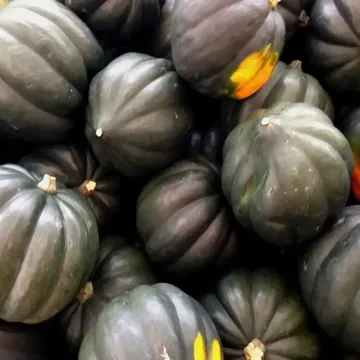Acorn squash is a popular winter squash variety, known for its unique ribbed shape and delicious, slightly sweet flavor. With a relatively easy cultivation process, acorn squash can be a rewarding addition to your home garden. This article will guide you through growing, harvesting, and enjoying acorn squash.
Introduction to Acorn Squash
Acorn squash (Cucurbita pepo) is part of the gourd family, native to North and Central America. It gets its name from its acorn-like shape, with a dark green rind and orange flesh inside. Acorn squash is versatile in the kitchen and packed with nutrients, making it a favorite for gardeners and cooks alike.
Planting Acorn Squash
1. Choosing the Right Location:
- Acorn squash thrives in full sun, requiring at least 6 to 8 hours of direct sunlight daily.
- Ensure the soil is well-draining, rich in organic matter, and slightly acidic to neutral (pH 5.5 to 7.0).
2. Timing:
- Acorn squash is best grown in warm weather, so plant the seeds after the last frost when the soil temperature reaches at least 60°F (16°C).
- In cooler regions, consider starting seeds indoors 3 to 4 weeks before the last frost date and transplanting them outdoors once temperatures rise.
3. Planting:
- Sow seeds 1 inch deep directly in the garden, spaced about 3 feet apart in rows that are at least 4 to 6 feet apart.
- For transplants, space plants similarly, giving them plenty of room to grow.
Growing Tips for Acorn Squash
1. Watering:
- Acorn squash needs consistent moisture, especially during fruit development. Water the plants deeply once a week, aiming for about 1 to 1.5 inches of water. Avoid wetting the leaves to reduce the risk of diseases.
2. Mulching:
- Apply a layer of organic mulch around the base of the plants to conserve moisture, suppress weeds, and keep the soil temperature stable.
3. Fertilization:
- Acorn squash is a heavy feeder, so prepare the soil by mixing in compost or a balanced fertilizer before planting. During the growing season, feed the plants with a nitrogen-rich fertilizer when the vines begin to run and switch to a fertilizer higher in phosphorus and potassium once flowering begins.
4. Supporting the Vines:
- Although acorn squash is often grown on the ground, you can use trellises or supports to keep the vines off the soil, reducing the risk of pests and diseases and allowing for better air circulation.
Pest and Disease Management
1. Common Pests:
- Squash bugs, vine borers, and cucumber beetles are common pests that can damage acorn squash. Inspect plants regularly and use organic pest control methods, such as neem oil or insecticidal soap, when necessary.
2. Disease Prevention:
- Powdery mildew, downy mildew, and bacterial wilt are potential issues. To prevent diseases, water at the base of the plants, practice crop rotation, and space plants properly for good air circulation.
Harvesting Acorn Squash
Acorn squash is ready to harvest when the skin hardens and turns a deep, solid green. The portion of the squash resting on the ground will turn yellow or orange. Typically, acorn squash matures 75 to 100 days after planting.
- Use pruning shears or a sharp knife to cut the squash from the vine, leaving a few inches of stem attached.
- Avoid pulling or twisting the squash off the vine, as this can damage the plant and other developing fruits.
Storing and Enjoying Acorn Squash
1. Curing:
- After harvesting, cure the squash by leaving it in a warm, dry place for about 10 days. This helps harden the skin further and improves storage life.
2. Storing:
- Once cured, store acorn squash in a cool, dry place with good air circulation. Acorn squash can last up to 3 months when stored properly.
3. Cooking:
- Acorn squash can be baked, roasted, steamed, or stuffed. Its sweet, nutty flavor pairs well with a variety of seasonings, making it a versatile addition to both savory and sweet dishes.
Conclusion
Growing acorn squash in your home garden is a gratifying experience, yielding a nutritious and delicious crop that can be enjoyed well into the winter months. By following the right planting, growing, and harvesting techniques, you'll be rewarded with a bountiful harvest of this versatile vegetable.

